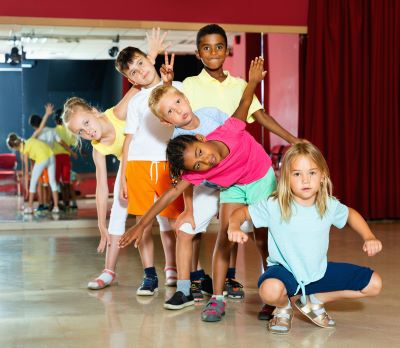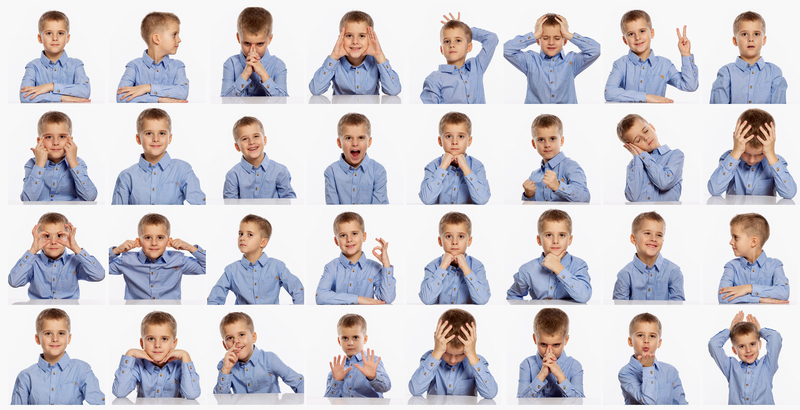Since March, children in the UK (and elsewhere) have been dealing with a range of often strong emotions related to the COVID-19 pandemic. Whether a child is now being taught in school (as some are) or as ‘distance-learners’ based at home, dance has something to offer in terms of their social and emotional learning. As a team embracing the arts, education and mental health, we are exploring an approach to social and emotional learning using dance to support children’s emotional understanding.
‘Dancemotion’ is a collaborative project, led by The Open University (OU), in partnership with Dance Educates and the Anna Freud National Centre for Children and Families. The video in this article shows a brief activity to illustrate how movement can be used to embody learning. Critically, it’s important to emphasise with the Dancemotion approach as a whole, it is the teachers’ and children’s interest and engagement with the content that is far more important than their experience or confidence in dance.
Why we’re doing this and why it’s important
There is strong research evidence that understanding our own and others’ emotions is an important, early phase of positive mental health.There is strong research evidence that understanding our own and others’ emotions is an important, early phase of positive mental health. The 2012 Chief Medical Officer’s annual report reinforced the importance of facilitating children’s healthy emotional development in her report Our children deserve better: Prevention pays. To date, however, the focus has largely been on late-stage, rather intensive interventions in terms of supporting the mental health of children, with little emphasis on mental health in terms of enhancing the social and emotional skills of all children in an engaging manner. More recent government reports have raised children’s mental health needs both in Future in mind: Promoting, protecting and improving our children and young people’s mental health and wellbeing (Department of Health, 2015) and the 2018 Government Green Paper on mental health: Failing a generation. Equally, the 2020 primary school-focused Relationships Education, Relationships and Sex Education (RSE) and Health Education curriculum prioritises recognising abusive relationships and the importance of friendships – both very important – but does not specify how children come to recognise particular feelings, or develop the vocabulary to talk about such issues. Dancemotion responds to this by offering pre-designed, structured activities that give children space and freedom to learn through movement, and to build their vocabulary around their growing understanding of themselves.
Equally, dance is in the curriculum, so why not use it to do something with wider value?
 Dancemotion: what is it?
Dancemotion: what is it?
Dancemotion uses improvisational movement and dance activities to prompt embodied experience and talk, to support young children to better understand emotions. Sessions on focal emotions including being ‘happy’, ‘sad’, ‘angry’, ‘embarrassed’ are supported by images, video, poems and discussion which all offer a creative space for children to extend their understandings.
Lots of work and resources are available to support children’s social and emotional learning, but very rarely from an arts-based approach. We strongly believe that an arts-based approach, and dance in particular, offers an extra dimension through the physicality of movement: where embodiment and exploration of physical metaphors and representations of emotions offers a context for children – many who struggle to express themselves through verbal or written language alone – to access and make meanings around complex concepts. This is not to downplay the role of talk which we agree is central to understanding. Instead we want to emphasise that some concepts are experienced, felt and observed, before they can be verbally understood and expressed, and this is where dance exploration can really help.
So what have we done?
Dancemotion was piloted with two Year 1 classes (children aged 5–6 years) in a state school in England within the school’s existing timetable. Class teachers were involved in planning and delivering lessons, together with dance specialists, to support relationship building with pupils and embed the approach within existing school life. The focus of Dancemotion is on learning for all, not therapy for those identified as ‘at risk’. Mindful of potential responses to the material, a mental health practitioner from the Anna Freud Centre was involved in planning and monitoring the pilot.
What have we learned?
In our pilot study we learned that the Year 1 children (5–6 years) responded well to activities embodying emotions and emotional responses including ‘confidence’, ‘shyness’, ‘relief’, ‘shock’: building vocabulary to express their developing understanding, through physical, embodied representation.
We also learned the activities were low risk in terms of triggering concerning emotional responses, with no need during the pilot for intervention or follow up from the mental health practitioner who monitored all lessons. This underlined the importance of how activities are framed – as learning, not therapy – and of creating a contained and well-supported safe space for exploration.
Dancemotion in lockdown
Even before the COVID-19 pandemic, we would all agree that life can be emotionally intense and challenging at times. When lockdown hit, we had conducted two out of the planned five pilot sessions, but we learned a lot from these two lessons. We also knew, even after we could no longer conduct the face-to-face sessions, that the teachers involved were sharing learning with their pupils via weblinks to access at home. So Alison Swann at Dance Educates created a short video to recap some of the activities from lessons 1 and 2, for children to use at home. Of course given this work was at a distance the emotional content was more superficial. The ‘jungle’ video below shows a brief activity, that was shared with the Year 1 children during lockdown, to illustrate elements of how the approach can use movement to explore more complex concepts.
Significance
Dancemotion’s creative, interdisciplinary approach offers something unique: emphasising the importance of exploring thoughts, feelings and ideas physically to build a richer understanding of concepts...Dancemotion’s creative, interdisciplinary approach offers something unique: emphasising the importance of exploring thoughts, feelings and ideas physically to build a richer understanding of concepts, which in turn has the potential to impact in a very meaningful way on children and their social and emotional development. Further developments aim to build a programme that can be used by schools and embedded without the need for onsite dance or mental health specialists. The pilot work has been critical in trialling concepts and content, addressing the important but arguably ‘risky’ challenge of allowing children to explore emotions in a ‘non-traditional’ way. We argue it is precisely because of these risks that this work is so crucial, and through the pilot study we have learned how the approach can be structured to support teachers to engage in creative, safe, enjoyable and meaningful exploration of emotional understanding with their pupils.
In the wake of COVID-19, it is highly likely that many children will have a lot of emotions that need processing and understanding. Dancemotion is not a therapeutic approach. However, what it can do is offer valuable opportunities for teachers and children to incorporate it in defining, creating and maintaining safe spaces: where children can explore thoughts, feelings and ideas physically through a structured format, and to form meaningful understandings of related vocabulary and concepts.
What can you do at home or in school?
As we mentioned above, dance is in the curriculum: so if you’re a teacher, think about how you could use it to do something ‘more’ than just make up a dance. Think about what you can explore, characterise or represent.
Dancemotion is not about asking children ‘how do you feel?’, or always making it about them personally. This is not therapy, but a potential vehicle to help children develop skills in an engaging manner. Use books, short films, or characters the children know, that you can explore through movement, to normalise feelings and show that feelings are universal.
If you’d like to know more about Dancemotion please contact Alison.Twiner@open.ac.uk




Rate and Review
Rate this article
Review this article
Log into OpenLearn to leave reviews and join in the conversation.
Article reviews